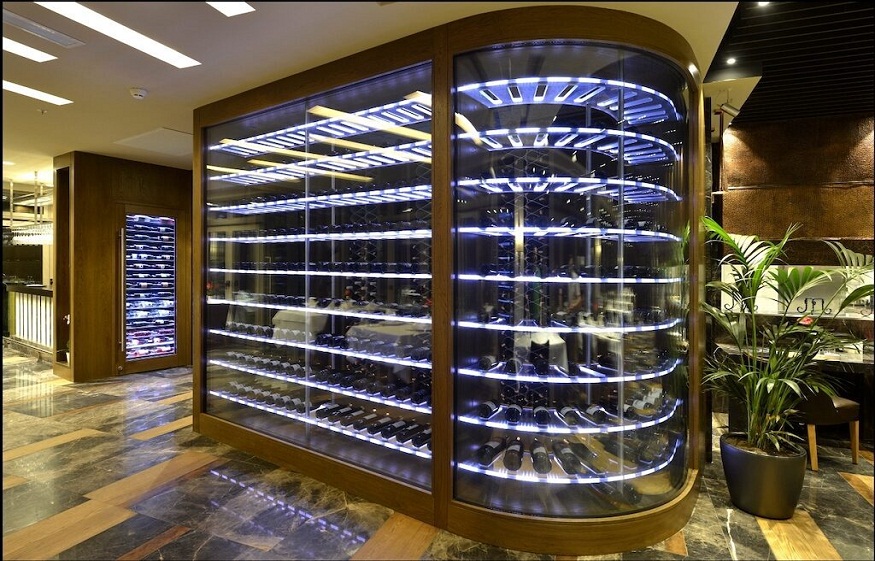For restaurants, bars, hotels, and wine retailers, a well-designed wine cellar transcends mere storage; it becomes a powerful tool for enhancing customer experience, showcasing offerings, and ultimately driving sales.
Crafting the perfect commercial wine cellars – Millesime requires a meticulous blend of environmental control, aesthetic appeal, and operational efficiency. It’s about creating a haven where precious vintages can mature gracefully while simultaneously captivating patrons and streamlining service. This article delves into the key considerations for designing and implementing a commercial wine cellar that strikes this delicate balance.
The Non-Negotiables: Environmental Control
Fundamentally, a wine cellar’s main purpose is preservation.Fluctuations in temperature, humidity, light, and vibration can irrevocably damage wine, leading to undesirable flavors and aromas. Therefore, establishing and maintaining a stable environment is paramount for any commercial venture dealing with wine.
Temperature: The ideal temperature range for long-term wine storage is between 50-55°F (10-13°C). Maintaining a consistent temperature within this range slows down the chemical reactions that lead to aging, allowing wines to develop complexity and character over time. Even within a seemingly reasonable range, severe temperature fluctuations can make the wine expand and compress, hence possibly causing cork failure and oxidation.
Investing in a robust and reliable cooling system with precise temperature control is therefore non-negotiable. Think about system redundancy for bigger cellars to reduce the possibility of catastrophic failure.
Humidity:The ideal humidity is between 50 and 70%. Low humidity can cause corks to dry and shrink, hence letting air into the bottle and oxidizing the wine. On the other hand, too high humidity could encourage mold growth, harm labels, and compromise cork quality.
A properly designed cellar will incorporate a humidification and dehumidification system to maintain this critical balance. Monitoring humidity levels with a reliable hygrometer is essential for ongoing management.
Light:Ultraviolet (UV) radiation from sunlight and even some artificial light sources can degrade wine, leading to off-flavors. Therefore, a commercial wine cellar should be located in a space devoid of natural light or utilize UV-blocking materials for any windows. Interior lighting should be low-intensity and preferably use LED bulbs, which emit minimal heat and UV radiation. Consider motion-sensor lights to minimize unnecessary exposure.
Vibration: Constant vibrations, whether from nearby machinery or heavy foot traffic, can disturb the sediment in older wines and potentially accelerate the aging process in an undesirable way.If this is unavoidable, consider incorporating vibration-dampening materials in the cellar’s construction and racking system.
Functionality and Flow: Designing for Efficiency
Beyond environmental control, a commercial wine cellar must be designed with operational efficiency in mind. Easy access for staff, clear organization of inventory, and a layout that supports service are crucial for a smooth workflow.
Layout and Accessibility: The layout of the cellar should facilitate easy retrieval of bottles. Consider the volume of wine being stored and the frequency of access. For high-volume establishments, wider aisles and clearly defined sections for different regions, varietals, or vintages are essential. Ensure adequate lighting within the cellar to allow staff to easily locate specific bottles. Consider incorporating a designated area for receiving and organizing new inventory.
Racking Systems: The choice of racking system significantly impacts both storage capacity and aesthetic appeal. Options range from traditional wooden racks to modern metal or acrylic designs. Consider the types and sizes of bottles being stored (standard, magnum, half-bottles) and choose a system that can accommodate them securely. Ensure the racking is sturdy and can support the weight of the wine. For display purposes, consider incorporating angled or label-forward racking in visible areas.
Inventory Management: A well-organized cellar is intrinsically linked to efficient inventory management. Implement a clear labeling system that allows staff to quickly identify and locate specific bottles. Consider utilizing wine management software to track inventory levels, bin locations, and bottle details. This not only streamlines service but also helps prevent stockouts and ensures accurate pricing.
Conclusion: Investing in Excellence
Crafting the perfect wine cellar for a commercial space is an investment that yields significant returns. By prioritizing environmental control, designing for efficiency, and considering the aesthetic impact, businesses can create a space that not only preserves their valuable wine collection but also enhances their brand image, elevates the customer experience, and ultimately contributes to their bottom line.
It’s a testament to their commitment to quality and a powerful tool for attracting and retaining wine-loving clientele. The symphony of storage and sales begins with a carefully orchestrated and thoughtfully executed wine cellar design.




